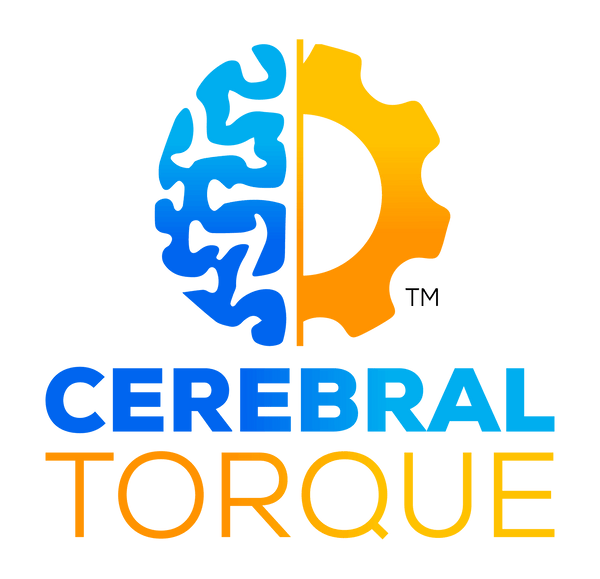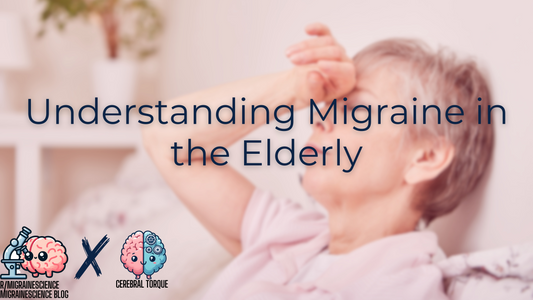
Tension-Type Headache Preventive Treatment
Cerebral TorqueShare
This post is for educational purposes only and may contain errors. Please talk to your neurologist.
The goals of prevention of tension-type headache (TTH) are essentially the same as migraine prevention:
- Decrease frequency, severity, and duration.
- Improve the standard of living of the patient by increasing function and decreasing disability.
- Increase responsiveness to the treatment of acute attacks.
Moreover, the terms episodic and chronic are also similar:
- episodic tension-type headache (duration of 30 minutes to 7 days)
- infrequent: ≥ 10 episodes occurring on < 1 day per month (< 12 days per year)
- frequent: ≥ 10 episodes on 1-14 days per month for ≥ 3 months (≥ 12 days and < 180 days per year)
- episodic tension-type headache often develops into chronic tension-type headache
- chronic tension-type headache
- episodes on ≥ 15 days per month on average for ≥ 3 months (≥ 180 days per year)
- May be continuous and unrelenting
Consider red flag symptoms as this is a chronic condition that can be conflated with secondary causes: https://www.cerebraltorque.com/blogs/migranews/do-i-need-neuroimaging-for-my-headache
There are specific cases where preventive TTH therapy is optimal in those with less than 10 episodes a month. Those that are unresponsive to acute treatment, are unable to take abortive medications due to contraindications or adverse effects, or those with medication overuse headache (MOH) aka rebound headache may be candidates for prevention.
There are 3 categories of prevention for TTH.
Pharmacologic therapy
Behavioral Therapy
Other (physical therapy, acupuncture, osteopathic manipulation, massage, etc.)
Pharmacologic therapy*:
Tricyclic antidepressants (e.g., amitriptyline, nortriptyline, protriptyline):
- First-line drug of choice for TTH is amitriptyline. This has the strongest evidence out of all TTH preventive therapies.
- While patients may be wary of this being an antidepressant, amitriptyline has an independent mechanism of action on pain. Treating TTH patients with an antidepressant is not due to a psychological cause, but due to the benefits of its effects on pain. This is important so that the patient does not misconstrue the treatment plan and their symptoms as psychiatric in origin.
- Benefits are seen after 4-6 weeks and may increase up to 3 months of treatment.
- Nortriptyline and protriptyline are secondary options to amitriptyline.
- Sedation- Amitriptyline>nortriptyline>protriptyline (protriptyline can be a stimulant in some patient populations).
- Weight gain- Amitriptyline, nortriptyline > protriptyline (protriptyline may actually cause weight loss).
- The drug is started at the lowest dose and titrated up until therapeutic effect is reached, adverse effects are a barrier, or the allowable maximum dose of the drug is achieved. Start amitriptyline at 10-12.5 mg nightly and increase dose in 10-12.5 mg increments every 2-3 weeks. Max dose: 100-125 mg nightly. Increase nortriptyline in 10-25 mg increments weekly. Protriptyline is started at 5 mg in the morning and titrated up to 5 mg weekly until a 20 mg dose is reached each morning.
- Risk of cardiac conduction abnormalities and arrythmias with TCAs therefore screening of patients for cardiac conduction system disease is necessary and an ECG may be warranted.
Other antidepressants (e.g., mirtazapine, venlafaxine):
- Second-line for TTH
- Effectiveness is not readily apparent and further studies are needed. (https://pubmed.ncbi.nlm.nih.gov/25931277/)
- May be used for the treatment of TTH without depression.
Anticonvulsants (e.g., topiramate, gabapentin):
- Further evidence is needed but may be an option for your physician.
Muscle relaxant (e.g., tizanidine):
- Clinical trial showed effectiveness: https://pubmed.ncbi.nlm.nih.gov/1468911/
- Combined treatment with tizanidine and amitriptyline may lead to a faster and better clinical outcome: https://pubmed.ncbi.nlm.nih.gov/16514501/
Trigger point injections:
- More research necessary.
- Some research shows effectiveness: https://pubmed.ncbi.nlm.nih.gov/23839118/, https://pubmed.ncbi.nlm.nih.gov/23698019/
Botulinum toxin injections (Botox):
- Uncertain effectiveness
- Meta-analysis showed no statistical significance when compared to placebo: https://pubmed.ncbi.nlm.nih.gov/22535858/
*Attempt discontinuation of pharmacologic management by gradually reducing dose after 6-12 months. Medication may be restarted if symptoms recur.
Behavioral therapy:
- Any of the following or combination thereof is suitable: Biofeedback, cognitive-behavioral therapy (CBT), relaxation, and regulation of sleep, exercise, and meals.
- While avoidance of triggers is key to migraine treatment, it is not for TTH. Coping with triggers is the better approach, not avoidance: https://pubmed.ncbi.nlm.nih.gov/19556046/
- Biofeedback in combination with relaxation to be the most effective behavioral therapy treatment modality for TTH: https://pubmed.ncbi.nlm.nih.gov/18540732/
- Combining behavioral therapy with pharmacologic therapy (specifically TCAs) is more effective than either alone: https://pubmed.ncbi.nlm.nih.gov/11325322/
Nonpharmacologic therapies not included above:
- Acupuncture: Limited benefit, but safe and may be used when other treatment modalities are not possible.
- Studies for acupuncture: https://pubmed.ncbi.nlm.nih.gov/27092807/, https://pubmed.ncbi.nlm.nih.gov/16055451/
- Physical therapy: No defined technique. Lack of definitive evidence although osteopathic manipulative therapy appears to be the preferred treatment modality. Low risk of side effects.
- Studies for physical therapy (including osteopathic manipulative therapy): https://pubmed.ncbi.nlm.nih.gov/26229071/, https://pubmed.ncbi.nlm.nih.gov/16886935/, https://pubmed.ncbi.nlm.nih.gov/25748428/, https://pubmed.ncbi.nlm.nih.gov/25170037/, https://pubmed.ncbi.nlm.nih.gov/34929374/.
For acute treatment of TTH, see: https://www.cerebraltorque.com/blogs/migranews/acute-treament-of-tension-type-headache-tth


